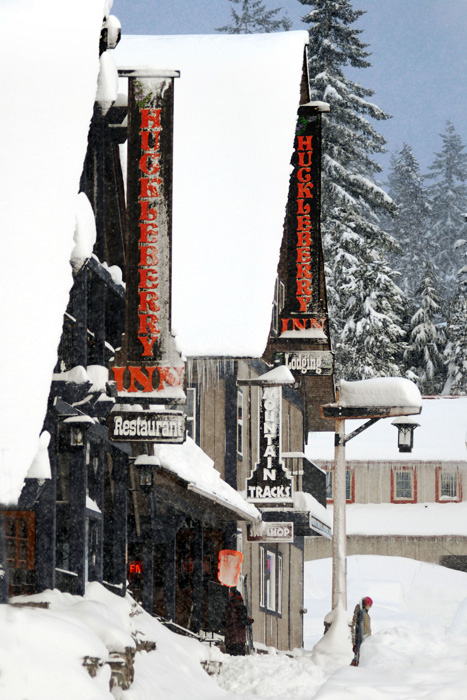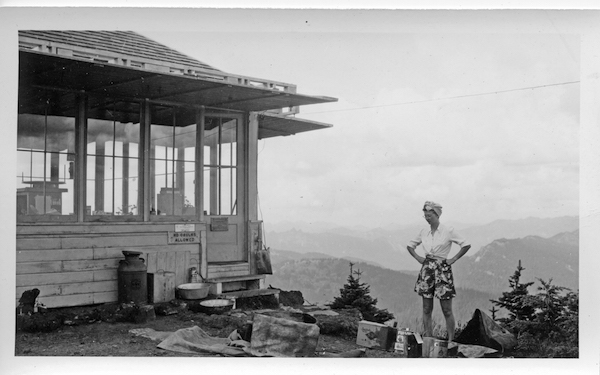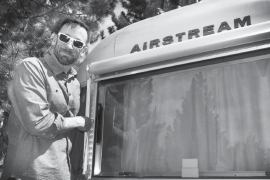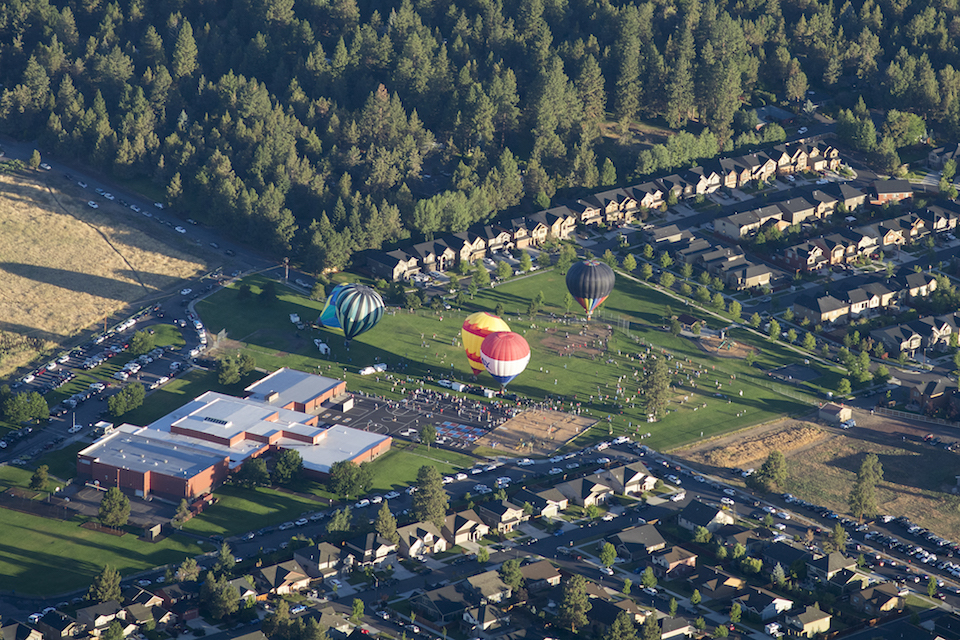Rising out of the urban jungle, US 26 crosses the northernmost Oregon Cascades pass at Government Camp on the slopes of Mt. Hood and descends into the high desert. This scenic byway carries travelers from hectic metropolis, through evergreen forest and across the arid homeland of a sovereign nation all in the span of about an hour and a half.
Starting a bit east of milepost 25 in Sandy, you can stop for coffee and a sweet delicacy at the German pastry shop, Toll Gate Inn Bakery, before the uphill trek towards Mt. Hood and Oregon’s high desert.
Then beginning at milepost 31, you enter the officially designated Mt. Hood Scenic Byway.
Depending on the time of year, the Salmon River at milepost 37 can be a raging torrent, trickling stream or angler’s haven. Its entire length is preserved as a National Wild and Scenic River, the only such designation in the nation. Draining from the glaciers of Mt. Hood, the river is home to steelhead, cutthroat trout, and Chinook and Coho salmon. Its banks provide habitat for black bears, mule deer, cougars, marmots and other wildlife.
To enjoy the Sandy River and its surroundings, motorists can hit the Wildwood Recreation area at milepost 39 for picnicking, hiking and interpretive kiosks to learn more about the Mt. Hood ecosystem.
Beginning about milepost 40, motorists pass the mountain towns of Wemme, Rhododendron, Welches and Zigzag, where there are year-round restaurants and motels.
After passing milepost 44, travelers will share the road with some of the earliest migrants to the Mt. Hood area—the Tollgate Campground and the Oregon Trail. This was the western terminus of the Barlow Road, the toll road across Mt. Hood’s wooded slopes built by man and mule in 1846. Pioneers on the Oregon Trail paid a toll here for passage into the Willamette Valley via land instead of the treacherous Columbia River. This was considered the most harrowing stretch of the nearly 2,000-mile Oregon Trail.
Just east of Tollgate, motorists begin a steeper ascent to the Government Camp pass across Mt. Hood. There’s a viewpoint past milepost 49 where viewers can approach the steep cliffs and hold their breath as they overlook the spectacular wooded chasms.
US 26 follows the route carved by Sam Barlow and his partners, which is documented on the historical marker at milepost 51. At this point, there are hiking trails for summer recreation or cross-country ski trails for winter afficionados.
Mt. Hood Ski Bowl awaits winter travelers at milepost 52, just below the Government Camp village. Complete with nighttime skiing, this is perhaps the most accessible winter sports recreation area in the Oregon Cascade range.
At milepost 54, motorists have the option to turn uphill and visit a vestige of the Depression-era Works Progress Administration. About six miles uphill, Timberline Lodge commands the southern slopes of Oregon’s tallest peak. Its storied history is one of overcoming adversity despite being dedicated by President Franklin Roosevelt himself in 1937. The winter of 2011- 2012 marks its seventy fifth anniversary. For skiing, dining, overnight accommodations and more, Timberline is a stunning feat of architecture and history.
To the east, the southern shoulder of Mt. Hood is dotted with pristine lakes, comfortable campgrounds and challenging hikes along the Pacific Crest Trail at milepost 62. This marks the confluence of the Pacific Crest Trail, Wapanitia Pass (3,950 ft.) and Frog Lake.
The high point of the journey along US 26, from west to east, is at Blue Box Pass at milepost 63. From there, travelers begin the descent into the high plateau of Oregon. To the east, there are more campgrounds, plus access to Timothy and Olallie lakes at milepost 66. Olallie Lake is known for its high-mountain fishing at the base of Mount Jefferson.
At milepost 70, motorists travel from one nation to another. It’s the western entry point to the reservation of the Confederated Tribes of Warm Springs. Long before Europeans came to the area, the Wasco, Warm Springs and Paiute people called this land home and still do today. About 4,000 descendants of the original tribes still live on the reservation.
Moving to the east, travelers notice a distinct change in scenery. Beginning at about milepost 86, the trees thin and the Oregon high desert plateau emerges. Marked by its volcanic geology and basaltic lava flows from thousands of years ago, the transition is stark. In the canyon below the landmark Mill Creek Bridge at milepost 92, basalt lava flows are visible. It was also here that Native Americans from the Cascades’ dry east mingled with their contemporaries from the wet west to trade.
Dropping down into the valley at Warm Springs, you’ll come upon the access to Kah-Nee-Ta Resort at milepost 103 and to the new Indian Head Casino. Visitors can also tour The Museum At Warm Springs just across the highway.
The Deschutes River marks the eastern boundary of the reservation and where travelers begin to climb back onto the plateau of the Oregon high desert. Before reaching Madras at about milepost 115, you’ll see the carrot seed fields, onion seed fields and hay fields that mark the end of the journey from western wetland over Mt. Hood’s alpine pass to the eastern high desert of Central Oregon.









